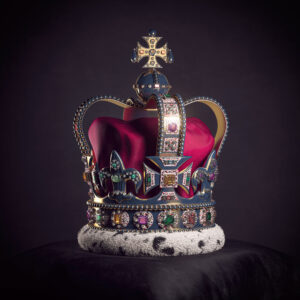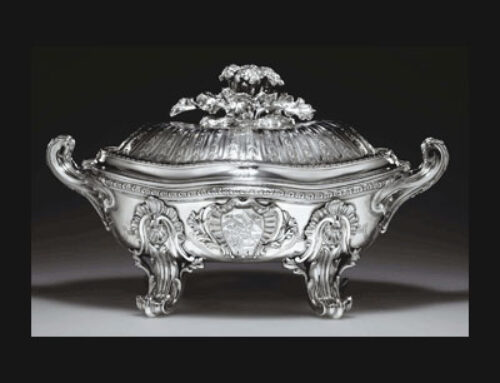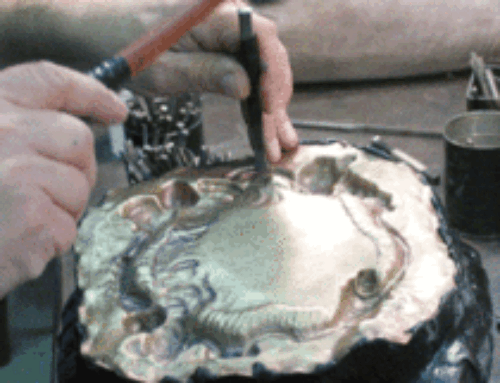 Anyone who watched the coffin of H.M. Queen Elizabeth the Queen Mother processed through London, will understand the mesmeric effect of a jewelled crown. Regalia still has its place.
Anyone who watched the coffin of H.M. Queen Elizabeth the Queen Mother processed through London, will understand the mesmeric effect of a jewelled crown. Regalia still has its place.
Gold and silver symbolise power and authority as well as wealth. They have been acknowledged as ’precious’ metals for thousands of years and as such have been made into objects that are at the heart of government.
Many officers of state and of local government have a staff of office, a chain or a badge to show their rank. Gold and silver lace is used on uniforms for civilians and the armed forces, and medals of gold and silver are worn with pride. Silver seals of office are both symbolic and practical: stamping authority on the vellum and paper documents through which countries are administered. In the United Kingdom maces lie centre stage while parliaments are in session; for centuries members of the House of Lords have worn coronets at Coronations and at the State Opening of Parliament. The monarch’s crown, sceptre and orb are iconic objects.
In the past buffets of plate were on display when monarchs dined in public; they were used as a display of wealth and power – the objects were regularly melted in times of war or when the coffers of the state were low. Ambassadors took an allowance of plate on their embassies to ensure that, as representatives of their nation and when negotiating on its behalf, they were able to show the wealth and political standing of their country when they entertained – a crucial part of the business of diplomacy. Gold and silver were always among the gifts to rulers by diplomatic missions, for example to Russia in the seventeenth century.
View list of relevant Silver Studies articles




